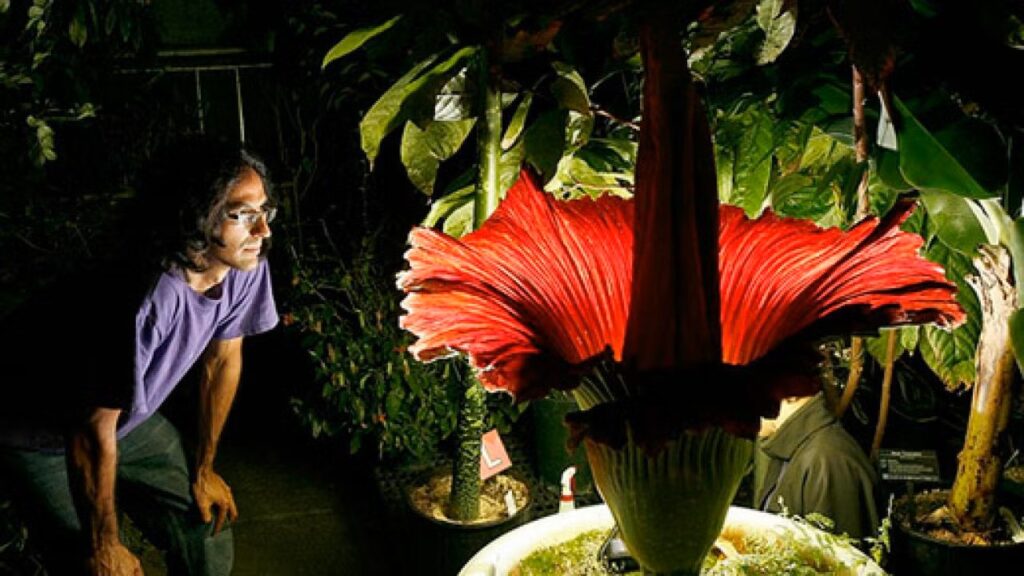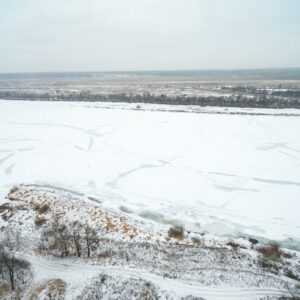MELBOURNE, Australia – A rare and extraordinary bloom with a notorious stench resembling rotting flesh has unfurled in Canberra, marking the third such occurrence in Australia within just three months.
The corpse flower (Amorphophallus titanum), a massive and unpredictable plant native to Indonesia’s rainforests, bloomed for the first time in 15 years at the Australian National Botanic Gardens on Saturday. By Monday, the pungent spectacle was already beginning to close, according to staff.
A Streak of Stinky Blooms Across Australia
This unusual event follows two other corpse flower blooms in recent months. In January, a flower briefly bloomed at Sydney’s Royal Botanic Gardens, drawing an estimated 20,000 visitors. A similar occurrence in November at Geelong Botanic Gardens, southwest of Melbourne, attracted just as much attention.
The corpse flower, known as bunga bangkai in Indonesia, is famous for its overpowering stench, which mimics the smell of decaying flesh to attract pollinators like flies and carrion beetles. The plant’s unpredictable blooming cycle—occurring once every 7 to 10 years—makes each flower an extraordinary and rare event.
With fewer than 300 corpse flowers in the wild and fewer than 1,000 in cultivation, sightings are extremely limited worldwide.
Why Are So Many Corpse Flowers Blooming in Australia?
Botanists remain puzzled over this unusual streak of corpse flower blooms.
Carol Dale, Canberra’s acting nursery manager, explained that a flower emerges only after the plant has stored enough energy in its underground tuber, known as a corm.
“One theory is that many of these plants are of a similar age, meaning they’ve finally built up enough carbohydrates to bloom,” Dale said.
Interestingly, Canberra, Sydney, and Geelong have vastly different climates, and each plant has been cared for using different fertilization techniques and management strategies. The synchronized blooming, despite these differences, remains a botanical mystery.
Judge Set to Rule on Trump’s Birthright Citizenship Order

Canberra’s Surprise Bloom
Before this recent bloom, Dale had doubts about whether Canberra’s climate—which occasionally experiences snowfall—was suitable for a corpse flower to thrive.
“It’s been in our collection for slightly longer than usual before its first bloom, so we just didn’t think Canberra had the right conditions,” she said.
“So yes, it did catch us by surprise—a very pleasant one.”
A Stench Unlike Any Other
The flower began unfurling around lunchtime on Saturday, and by that evening, it had reached peak stench.
“We could smell it from across the road. It was definitely gag-worthy,” Dale described.
Due to space limitations in the greenhouse, visitor numbers were capped using a ticketing system, restricting the crowd to a few hundred at a time.
Attendees compared the overwhelming odor to rotting flesh, dead animals, sweaty socks, sewage, garbage, and sulfurous rotten eggs.
By Monday, the worst of the stench had faded, though Dale confirmed the flower still retained a lingering odor.
“We collected pollen about an hour ago, and if you get up close, it still has that distinctive rotting flesh smell,” she said.
With the bloom now closing, Canberra’s corpse flower will return to its long dormancy—until it surprises gardeners again years or even decades from now.






